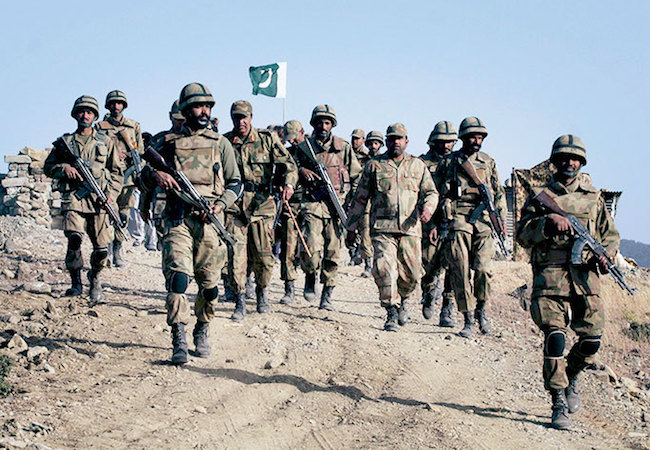Pakistan’s policy of full spectrum deterrence

By Beenish Altaf
Pakistan is pursuing Full Spectrum Deterrence (FSD) which is described in the larger philosophy of Credible Minimum Deterrence (CMD). It, by no means intends to seek parity with India in terms of nuclear weapons, instead the full spectrum deterrence is to ensure that there are no gaps in Pakistan’s deterrence capability.
At the outset, FSD was approved by the National Command Authority on Sept 5, 2013. It is the principal body involved in policy making on research, development, production, use and security of the country’s nuclear program. This strategy was taken-on in response to India’s war fighting doctrines known as ‘Cold Start Doctrine’ and its proactive operations, in order to offer a range of options to the decision-making bodies. Basically, it guides the development of nuclear capability, aimed at bringing every Indian target into Pakistan’s striking range.
Noticeably, India has taken an announced sub-conventional route due to which the region has entered into the Cold War sort of phase, striving for regional supremacy through several treacherous means. These means include different proxy wars on border areas between India and Pakistan. Similarly the Western border with Afghanistan is also under a full show of sub-conventional kind of conflict. For that reason, the likelihood of a full scale conventional war is no more a viable option between the two countries because of the concept of mutually assured destruction.
There is a constant reverberation by top Indian leadership in their public statements of using terrorism to destabilize Pakistan. India is evidently, engaged in continuous surgical strikes on the LoC, time-in and time-out, which in any case would be strongly retaliated by Pakistan. The Cold Start Doctrine or a strategy is actually a war fighting scheme that calls on India’s conventional forces to perform holding attacks before international intervention or before nuclear retaliation from Pakistan.
Hitherto, it is believed that this doctrine is a step that would breakdown the deterrence between both nations ending up in serious consequences, including the potential use of nuclear weapons. This proactive strategy option is actually a more aggressive move and is an action having more offensive lines. It is worth mentioning here ironically, that India has a declared policy of no-first use of nuclear weapons but India’s all the belligerent steps are pointing towards offensive moves and strategies.
It actually threatens Pakistan from its conventional asymmetric superiority relationship. Genuinely narrating Islamabad must be prepared for Delhi opting to nuclear first-use and ever more so with the hardliners like Manohar Parrikar, AjitDavol and Sushma Sawraj at the helm of dictating country’s nuclear policies / moves. In this regard, on the global level, India’s constant aggressive steps and statements, one after the other, gives appalling signals to the international community that the South Asia region is in a state of permanent shackles of regional conflicts.
However, due to above mentioned espousing weaponry expansion and military enlargement by India, it became compulsory for Pakistan to move towards full spectrum deterrence in order to respond to these threats at the tactical level, the counter-force level, and the counter-value level. It needs to cover all levels of threat. Pakistan calls its weapons as Weapons of Peace that reduces the threat and probability of a full-fledge war. It should be taken into account that the strategic stability in South Asia was not just about Pakistan and India; instead it involves China and the US into the sphere.
Few salient features of Pakistan’s full spectrum deterrence policy have been highlighted recently by National Command Authority’s adviser, retired Lt Gen Khalid Kidwai. He said that ‘it envisages possession of a full range of nuclear weapons that could reach every part of India, having enough yield and numbers to deter rival from its policy of massive retaliation and having liberty of picking targets including counter-value, counter-force and battlefield.’
Indian growing efforts for getting into all the export control cartels specifically its recent inclusion in the Missile Technology Control Regime (MTCR) and speculations of entering into the Wassenaar Arrangement (WA) could disturb the strategic balance in the region. It would lead in triggering an arms competition in the Indian Ocean region as well. Therefore, reassurance of Pakistan’s full spectrum deterrence is the need of hour while observing Indian nuclear politics rhetoric’ about the introduction of new and advance technologies, and sophisticated nuclear weapons.




